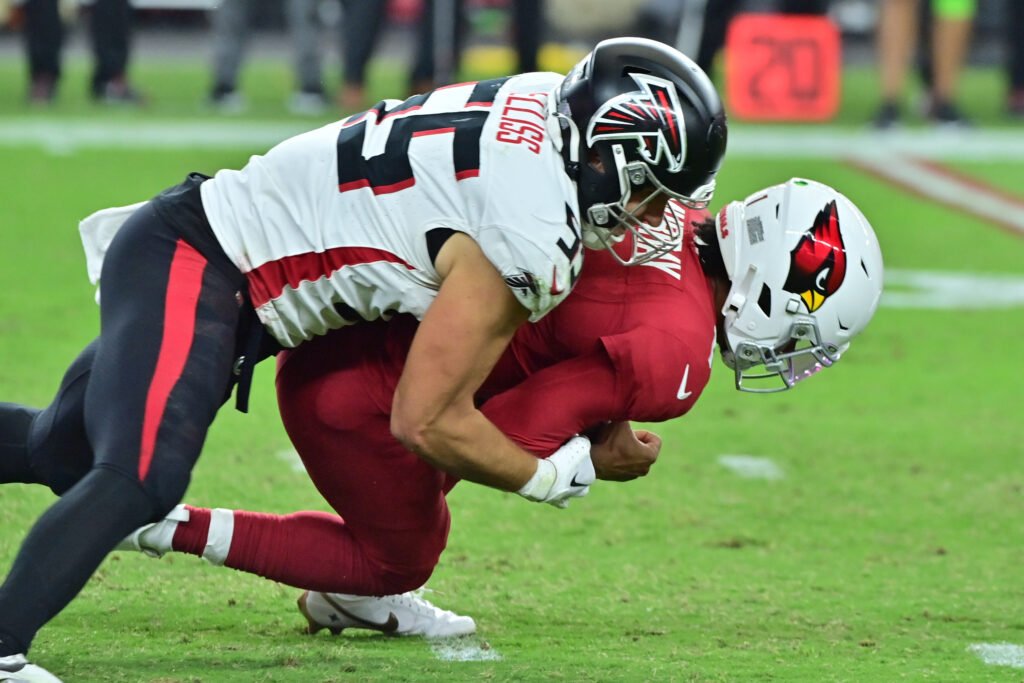Data is King! Looking forward to diving into some thoughts on Advanced NFL Metrics and how it relates to player performance.
Advanced Metrics in NFL Player Evaluation
The 2024 season has introduced several advanced NFL metrics through Next Gen Stats, including Tackle Probability, Offensive Shift and Motion Classification, and an updated Field Goal Probability 2.0 model. Developed in collaboration with Zebra Technologies, Wilson Sporting Goods, and Amazon Web Services, these metrics aim to provide new insights into player performance and game dynamics. These tools capture player data such as location, speed, distance traveled, and acceleration. This information is collected ten times per second, allowing for a granular analysis of on-field actions.
Tackle Probability is an AI-driven metric that evaluates the likelihood of a successful tackle in real-time. It incorporates 20 different features for each of the 11 defenders every tenth of a second. This metric helps quantify tackling efficiency by estimating tackle opportunities, missed tackles, group tackles, and more. On the offensive side, the Offensive Shift and Motion Classification metric uses pre-snap tracking data to analyze variables like speed, acceleration, and distance traveled by players. Movements are categorized into shifts, motions, and motions at the snap, providing deeper insights into pre-snap actions.
The updated Field Goal Probability 2.0 model now accounts for individual kicker skill levels, estimating the likelihood of a successful field goal based on historical performance and contextual conditions. Similarly, the PAT Decision Guide offers real-time, data-driven support for making decisions after a touchdown, comparing the odds of winning under different scenarios. This tool considers factors such as projected drives remaining and the likelihood of future scores.
Enhancing Engagement Through Promotional Strategies
In addition to leveraging advanced metrics for performance analysis and betting strategies, promotional strategies, such as bonus codes, play a significant role in attracting and retaining users on sports betting platforms. For example, BetMGM offers various bonuses that appeal to new and existing customers. These promotions may include risk-free bets, deposit matches, or odds boosts, providing additional value to the betting experience. Utilizing a BetMGM bonus code can increase the initial bankroll, allowing bettors to explore various betting opportunities without significant upfront investment.
For instance, a new user might sign up with a BetMGM bonus code, receiving a $1,000 risk-free bet. This promotion enables the bettor to place a wager without the fear of losing their own money, effectively lowering the entry barrier. With the additional funds or risk-free bet, the user can then apply advanced metrics to analyze potential bets more thoroughly, enhancing the chances of a successful outcome. These promotional offers not only incentivize sign-ups but also encourage more strategic betting by providing users with a cushion to experiment with data-driven approaches.
Impact on Game Planning and Player Health
Teams are increasingly using advanced metrics to make data-driven decisions in game planning. Metrics such as Tackle Probability and Offensive Shift and Motion Classification assist in analyzing and improving team performance. These tools can identify players who consistently position themselves effectively or analyze the effectiveness of pre-snap movements. This data-driven approach helps teams to strategize better and make informed decisions during games.
Player Health & Safety initiatives can leverage Next Gen Stats data to enhance player safety. By analyzing data points related to injuries and tackling efficiency, teams can develop safer practices and reduce injury risks. Machine learning techniques play a significant role in this analysis, automating player participation reports and calculating performance metrics. For example, the 2024 Big Data Bowl winners Matthew Chang, Katherine Dai, Daniel Jiang, and Harvey Cheng contributed to developing the Tackle Probability metric by leveraging tree-based machine learning models.
In broadcasts, the integration of advanced metrics offers new storytelling opportunities, providing fans with real-time insights that go beyond the standard box score. Metrics like the PAT Decision Guide and Field Goal Probability 2.0 provide real-time analysis during broadcasts, enhancing the viewer’s experience with detailed and insightful data. This increases engagement and understanding of the game, as fans can access the same data-driven information relied upon by coaches.
Broader Implications for Football Analytics
The NFL’s collaboration with technology partners ensures a robust and reliable data collection and analysis process. The tracking system, installed in every NFL venue, uses hundreds of devices per game to capture player data. This information is used to derive advanced statistics and automate reports. Metrics like Completion Percentage Over Expectation (CPOE) contextualize quarterback performance by considering various factors such as air distance and target separation, providing a better evaluation of challenging throws.
Adjusted Net Yards Per Attempt (ANY/A) weighs all elements of quarterback play, including passing yardage, sacks, touchdowns, and interceptions. Similarly, Expected Points Added (EPA) measures the impact of each play on the game’s outcome, offering a clear picture of play efficiency. Other metrics like DVOA (Defense-Adjusted Value Over Average) analyze the success of football plays based on different situations and opponent strength, further enhancing analytics.
Platforms such as Pro Football Reference, Football Outsiders, and PFF offer cross-platform data, enabling comprehensive analysis of player performance and team dynamics. Validating and cross-referencing data from these various sources ensure accuracy and reliability. This comprehensive approach to football analytics allows for more precise assessments and actionable insights, pushing the boundaries of the field.
Advanced metrics have also become crucial tools for fantasy football players. Platforms like FantasyPros and PFF offer metrics such as air yards, deep ball passing, and pocket time, assisting players in making informed decisions. Metrics like Fantasy Strength of Schedule provide insights into opponent matchups, helping players anticipate challenges and opportunities. This richer data set allows for more strategic planning and better performance in fantasy leagues.
The Wrap-Up Advanced NFL Metrics
In conclusion, advanced metrics significantly impact understanding player performance, game planning, and sports betting. These metrics provide a granular view of on-field actions, enhancing decision-making for teams, bettors, and fantasy football enthusiasts alike. Their integration into various platforms and broadcasts ensures wide accessibility and a deeper appreciation of the game.
Thank you for reading my Advanced Metrics article. You can read more of my sports betting content on my IDP+ Author page. After that, feel free to connect with me on Twitter @MarcSaulino and follow @IDP_Plus to stay informed about everything NFL-relevant by becoming a member.



